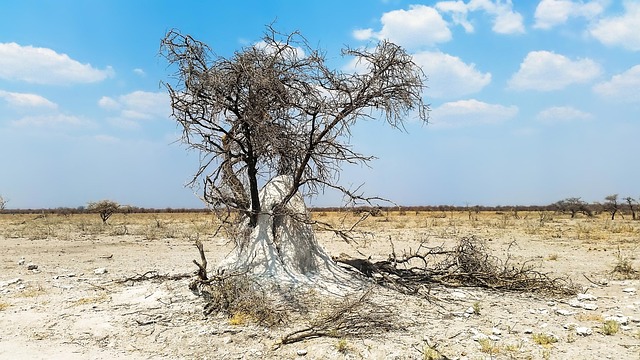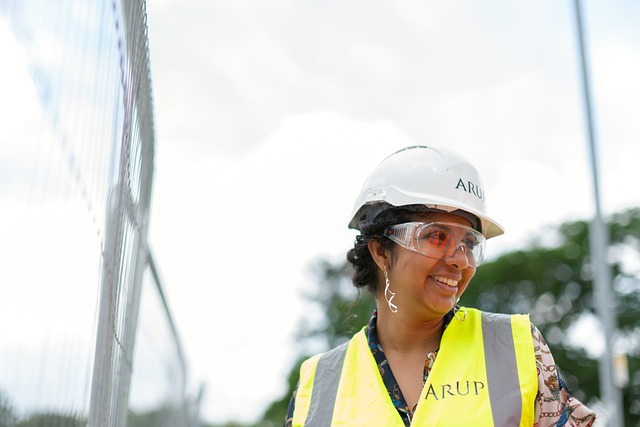Termites pose a significant threat to homes, causing structural damage that can lead to severe consequences. Regular termite inspections are crucial for early detection and minimizing repair costs. These thorough checks involve advanced methods and tools to identify infestations, providing solutions and prevention recommendations. Pre-purchase inspections reveal potential issues in older homes, while prompt action is vital after detection to prevent further damage. Regular inspections and proper maintenance deter termites and safeguard properties.
“Protecting your property from invisible invaders: Unveiling the Power of Comprehensive Termite Inspections. Termites, often overlooked, can cause devastating damage to structures, making regular termite inspections crucial for homeowners and real estate buyers. This article delves into the intricacies of these silent destroyers and their impact. We explore why inspections are vital, detailing the process, common signs, and post-inspection steps. Stay informed, as understanding these hidden threats is the first line of defense in preventing costly repairs.”
Understanding Termite Damage and Its Impact

Termites are silent destroyers that can cause significant structural damage to homes and buildings. Understanding their behavior and the extent of potential harm is crucial when it comes to termite inspections. A comprehensive inspection aims to uncover any signs of termite activity, from small entry points to extensive infestations. These tiny insects work relentlessly, often going unnoticed, until they’ve caused considerable harm.
The impact of termite damage can be severe, leading to weakened structural elements, compromised foundations, and even partial building collapses. Termites feed on cellulose-rich materials, making wooden structures particularly vulnerable. Regular termite inspections are essential for homeowners and property managers alike, as early detection allows for prompt treatment, minimizing repair costs, and preventing further devastation.
The Importance of Regular Termite Inspections

Regular termite inspections are an essential part of maintaining a healthy and safe home, especially in regions where termites are prevalent. These insidious pests can cause significant structural damage over time, often going unnoticed until it’s too late. A comprehensive termite inspection allows for early detection of any infestations or potential risks, enabling homeowners to take prompt action.
By scheduling regular checks, you can protect your investment and avoid costly repairs. It provides peace of mind, knowing your property is secure. Termite inspectors use advanced methods to locate signs of termites, including mud tubes, damaged wood, and distinctive smells. These inspections are not just about finding problems but also providing solutions and recommendations for prevention, ensuring your home remains termite-free for the long term.
Comprehensive Inspection Process: What to Expect

A comprehensive termite inspection involves a meticulous process designed to identify and assess any signs of termite activity or damage. During this inspection, a trained professional will thoroughly examine your property, paying close attention to areas most susceptible to termite infestation, such as foundations, walls, floors, and structural elements. They’ll look for visible evidence like mud tubes, wood damage, or wings from discarded termite sheddings, which are clear indicators of an active infestation.
The inspector will also use specialized tools and techniques, including moisture meters and thermal imaging cameras, to detect hidden signs of termite damage. These advanced tools can pinpoint areas of high moisture content that attract termites, as well as any structural anomalies that might suggest previous or ongoing infestations. This thorough examination ensures a complete understanding of your property’s current state in terms of termite activity, allowing for effective prevention and treatment strategies moving forward.
Common Signs and Indicators of Termite Infestation

Termites can cause significant structural damage to homes and buildings if left undetected. A termite infestation often goes unnoticed until severe damage has occurred, making regular termite inspections crucial for homeowners. During a comprehensive termite inspection, professionals look for common signs and indicators of an active infestation. These include mud tubes on walls or foundations, which termites build to protect their colonies from predators; wood damage, such as hollowed-out areas or weakened structural elements; and swarmer activity, where winged termites are seen near windows or doors during certain seasons.
Other visual cues may include piles of dead termites or shed wings around windowsills or floors, as well as distinctive holes in wooden structures. Faint odours resembling mould or mildew can also be an early warning sign. Promptly addressing these indicators is essential to prevent extensive termite damage and ensure a safe living environment. A professional termite inspection is the best defence against these silent destroyers, providing homeowners with peace of mind and early detection for effective treatment.
Pre-Purchase Termite Inspections: A Buyer's Guide

When buying a home, especially an older one, pre-purchase termite inspections are crucial. These thorough assessments by professional pest control experts can reveal any signs of termite damage or infestation, which is essential knowledge for buyers. A termite inspection involves a detailed examination of the property’s structure, focusing on areas where termites are most likely to be present, such as foundations, walls, and floors.
During the inspection, professionals use various methods like visual assessment, moisture meters, and non-invasive scanning technologies to detect any evidence of termite activity. A comprehensive report will detail findings, potential risks, and recommendations for treatment or prevention. This proactive step ensures that buyers are fully informed about the state of the property’s health, helping them make a confident decision in what can often be a competitive real estate market.
Post-Inspection Actions and Prevention Measures

After a thorough termite inspection, taking immediate action is crucial for effective pest control. If termites are detected, professional treatment options should be discussed and implemented as soon as possible to prevent further damage. Homeowners can expect detailed reports from inspectors outlining the findings and suggesting tailored solutions. These might include targeted treatments, barrier systems, or recommendations for structural modifications.
Prevention is key when it comes to termite control. Regular inspections are essential to identify potential issues early on. Homeowners should also maintain proper maintenance practices, such as keeping vegetation trimmed back from the house and ensuring proper drainage around the foundation. By combining proactive measures with prompt treatment, homeowners can protect their properties from these persistent pests and avoid costly repairs.
